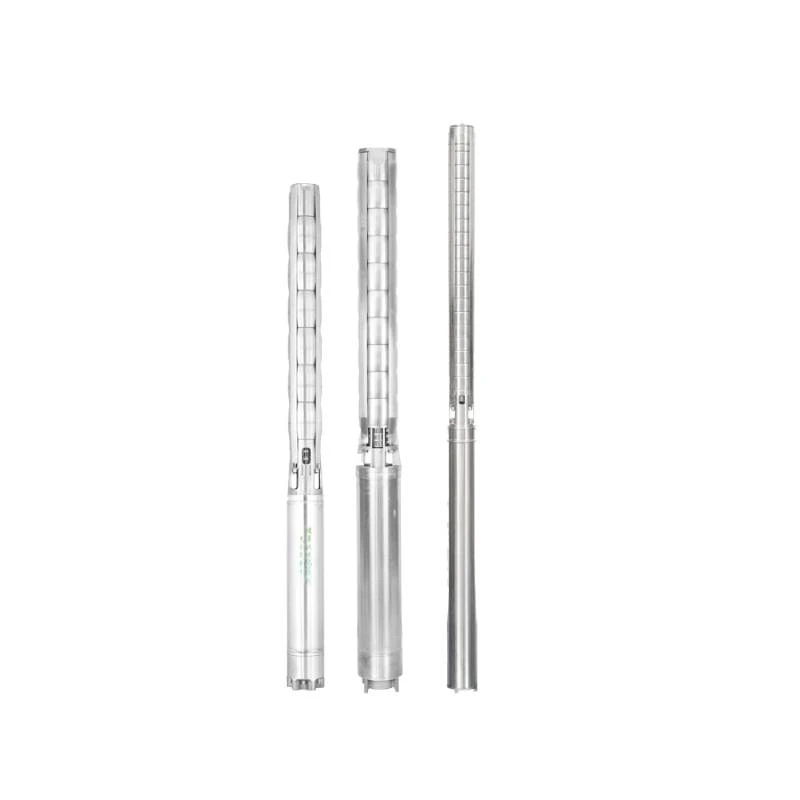Aug . 09, 2024 20:10 Back to list
Exploring the Benefits and Uses of Deep Well Submersible Water Pumps in Modern Water Systems
Understanding Deep Well Submersible Water Pumps
In the realm of modern water extraction and management, deep well submersible water pumps play a crucial role. These pumps are designed to operate below the water surface, providing efficient solutions for a variety of applications, from agricultural irrigation to municipal water supply and geothermal heating systems. Their unique design enables them to handle the challenges presented by deep groundwater sources, making them an essential component in many water management systems.
What is a Deep Well Submersible Water Pump?
A deep well submersible water pump is a type of pump that is submerged in water and operates underwater to draw water from deep underground sources. Unlike traditional pumps that are installed above the ground and require a suction mechanism to bring water to the surface, submersible pumps are located at the bottom of the well. This location allows them to push water to the surface through a discharge pipe, facilitating efficient water extraction.
Key Components and Functionality
The main components of a deep well submersible pump include the motor, impellers, and discharge head. The motor is typically hermetically sealed, meaning that it is completely enclosed to prevent water from entering and causing damage. The impellers, often made of durable materials like stainless steel or thermoplastic, work by spinning rapidly to create centrifugal force, which propels water towards the surface.
The pump operates by using electric energy to power the motor, which then drives the impellers. As these impellers rotate, they create a vacuum that pulls water into the pump housing. The pressurized water is then pushed through a discharge pipe to the surface, where it can be used as needed.
deep well submersible water pump

Advantages of Deep Well Submersible Pumps
One of the primary advantages of deep well submersible pumps is their high efficiency. Because they operate underwater, they do not have to rely on suction, which can be less effective and lead to cavitation—a phenomenon that causes bubbles to form in the liquid and can damage the pump. Additionally, these pumps can operate at greater depths, making them ideal for situations where water sources are located deep underground.
Another significant benefit is their durability. Designed to withstand harsh conditions, submersible pumps are typically made from corrosion-resistant materials, ensuring a long service life even in challenging environments. They also feature fewer moving parts compared to other pump types, reducing maintenance needs and the potential for mechanical failure.
Applications
Deep well submersible water pumps are widely used in various industries. In agriculture, they provide essential irrigation water for crops, serving to enhance food production even in arid regions. In municipal settings, they are critical in supplying drinking water to communities, ensuring that the population has access to clean water. Additionally, these pumps are used in industrial applications to supply cooling water or to manage wastewater.
Conclusion
Deep well submersible water pumps represent a vital technology in water management. Their ability to efficiently extract water from significant depths while minimizing operational challenges makes them indispensable in agricultural, municipal, and industrial applications. As water scarcity becomes an increasingly pressing global issue, the role of these pumps in providing reliable access to groundwater is more important than ever. By understanding their functionality and advantages, users can make informed decisions when selecting pumping solutions tailored to their specific needs. With advancements in technology, the future of deep well submersible pumps looks promising, paving the way for even more efficient and sustainable water management practices.
-
Submersible Water Pump: The Efficient 'Power Pioneer' of the Underwater World
NewsJul.01,2025
-
Submersible Pond Pump: The Hidden Guardian of Water Landscape Ecology
NewsJul.01,2025
-
Stainless Well Pump: A Reliable and Durable Pumping Main Force
NewsJul.01,2025
-
Stainless Steel Submersible Pump: An Efficient and Versatile Tool for Underwater Operations
NewsJul.01,2025
-
Deep Well Submersible Pump: An Efficient 'Sucker' of Groundwater Sources
NewsJul.01,2025
-
Deep Water Well Pump: An Efficient 'Sucker' of Groundwater Sources
NewsJul.01,2025
-
 Submersible Water Pump: The Efficient 'Power Pioneer' of the Underwater WorldIn the field of hydraulic equipment, the Submersible Water Pump has become the core equipment for underwater operations and water resource transportation due to its unique design and excellent performance.Detail
Submersible Water Pump: The Efficient 'Power Pioneer' of the Underwater WorldIn the field of hydraulic equipment, the Submersible Water Pump has become the core equipment for underwater operations and water resource transportation due to its unique design and excellent performance.Detail -
 Submersible Pond Pump: The Hidden Guardian of Water Landscape EcologyIn courtyard landscapes, ecological ponds, and even small-scale water conservancy projects, there is a silent yet indispensable equipment - the Submersible Pond Pump.Detail
Submersible Pond Pump: The Hidden Guardian of Water Landscape EcologyIn courtyard landscapes, ecological ponds, and even small-scale water conservancy projects, there is a silent yet indispensable equipment - the Submersible Pond Pump.Detail -
 Stainless Well Pump: A Reliable and Durable Pumping Main ForceIn the field of water resource transportation, Stainless Well Pump has become the core equipment for various pumping scenarios with its excellent performance and reliable quality.Detail
Stainless Well Pump: A Reliable and Durable Pumping Main ForceIn the field of water resource transportation, Stainless Well Pump has become the core equipment for various pumping scenarios with its excellent performance and reliable quality.Detail
